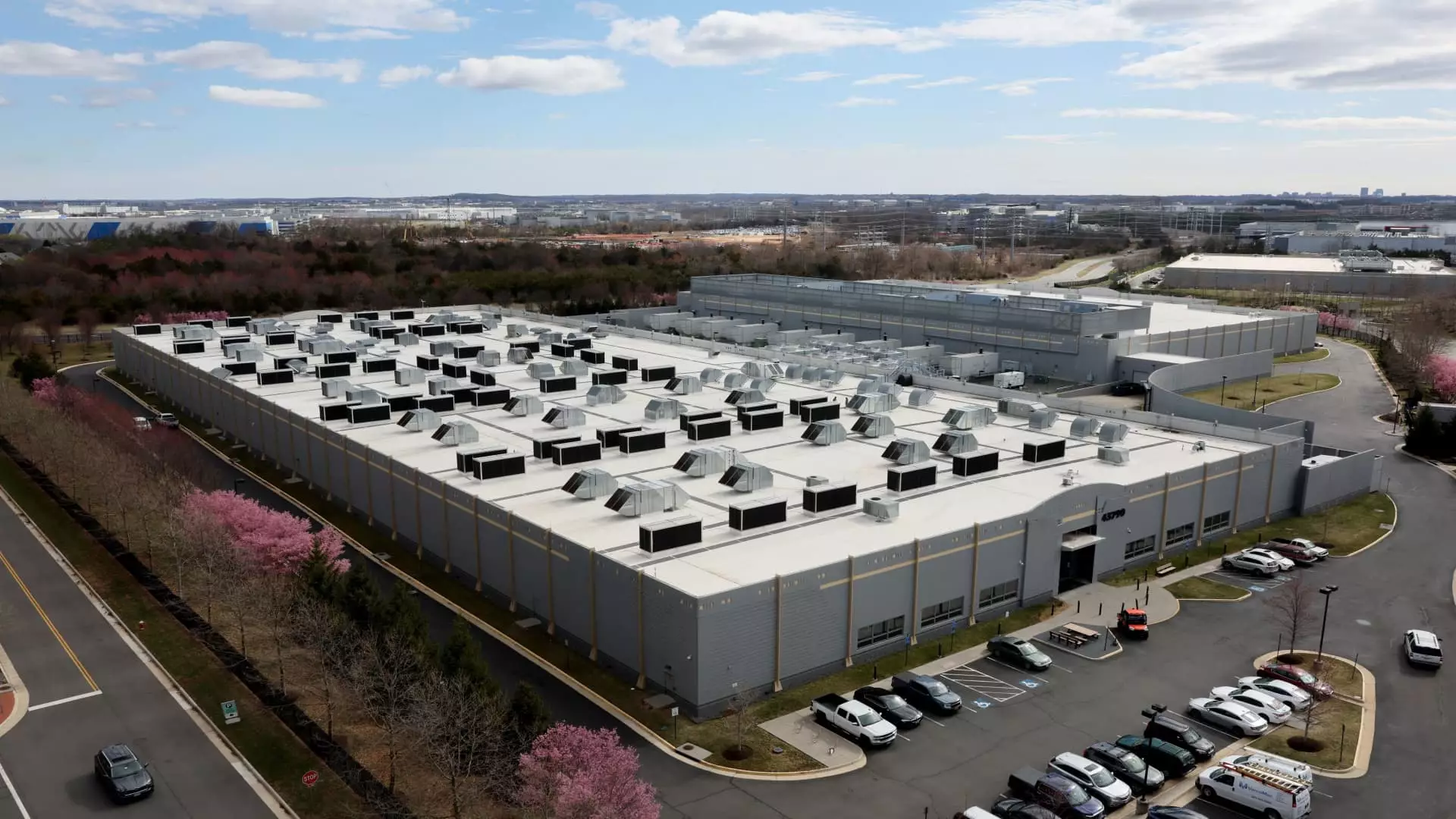In a notable partnership, the Abu Dhabi sovereign wealth fund ADQ and American private equity firm Energy Capital Partners (ECP) have agreed to funnel a staggering $25 billion into energy infrastructure focused primarily on the burgeoning needs of data centers in the United States. This is not just a mere investment; it is part of a larger trend where the demand for electricity is skyrocketing, driven by technological advancements and an insatiable appetite for data processing. The implications of this deal resonate beyond financial figures, touching on issues of sustainability, resource allocation, and geopolitical dynamics in an era increasingly dictated by technological giants.
What’s at stake here goes far beyond just numbers. As an ambitious push toward renewable energy progresses, the massive expansion of data centers poses a conundrum—how do we balance the escalating energy needs with sustainable practices? In an age where energy consumption is intertwined with environmental concerns, the partnership’s focus on developing “captive power plants” raises eyebrows. This strategy aims to ensure reliability and proximity, which sounds reasonable, but could easily be critiqued as an outdated approach to dealing with modern energy needs.
Government and Corporate Intersections: A Double-Edged Sword
The partnership emerges in the backdrop of an increasingly complex relationship between governments, businesses, and technology. Sheikh Tahnoon bin Zayed Al Nahyan, head of ADQ, was recently spotted engaging with key U.S. figures, including Elon Musk and Donald Trump. This intersection of corporate ambition and political maneuvering underscores an alarming reality—the reshaping of national policy to favor big investments may erode local interests.
The depth of the ADQ-ECP association should prompt a reevaluation of how energy policies are formulated in contexts where foreign interests overlap with national priorities. There’s a palpable concern that deals like this may pave the way for energy monopolies that prioritize corporate profits over environmental preservation and social responsibility. While the focus is on meeting rising demand, it beckons us to question: at what cost?
The Wall of Data Centers: A Growing Concern for Sustainability
The assertion that data centers will double or triple their energy consumption by 2028 should send alarm bells ringing. As essential as they are for modern infrastructure—supporting everything from cloud computing to artificial intelligence—the environmental toll cannot be understated. A report published by the International Energy Agency projects that the data center sector alone could account for over one-third of additional energy demand in the U.S. by 2026. When juxtaposed with the growing urgency of climate change, it becomes evident that we are standing at a critical juncture.
Critics of such extensive investments may argue that failing to incorporate greener alternatives into this mix condemns us to a cycle of dependency on traditional power sources. The push for renewable energy must be more aggressive and prioritized, especially when we consider that the carbon footprint of these infrastructures extends far beyond their immediate power consumption.
The Economic Landscape of Power Generation amidst Tech Giants
The financial implications of this investment partnership also offer a fascinating glimpse into how power generation could be shaped in the future. ECP, boasting a strong financial portfolio with over $31 billion raised in cumulative commitments, represents the kind of corporate heft that can significantly influence the energy landscape. In a time where technological giants—Amazon, Google, and Microsoft—are in an arms race to advance AI, the growing reliance on data centers reveals a stark reality: energy is the lifeblood of tech innovation.
It’s important to recognize that, while economic growth is a commendable objective, it cannot come at the expense of progressive environmental stewardship. Policymakers and business leaders should strive for a model that harmonizes economic expansion with actionable sustainability initiatives. The idea of transforming our energy infrastructure should not merely reflect current demands but anticipate future technological and environmental needs that will arise as AI and other industries continue to evolve.
This $25 billion investment encapsulates the tensions between innovation, sustainability, and governance, illuminating the multi-faceted implications that resonate through our current and future energy choices. The partnership with ADQ and ECP has the potential to become a case study on the delicate balance between economic ambition and responsible energy management in an era obsessed with data. In short, we must reconsider whether countless dollars in investment equate to a better future or pave the way for more significant dilemmas just beyond the horizon.

